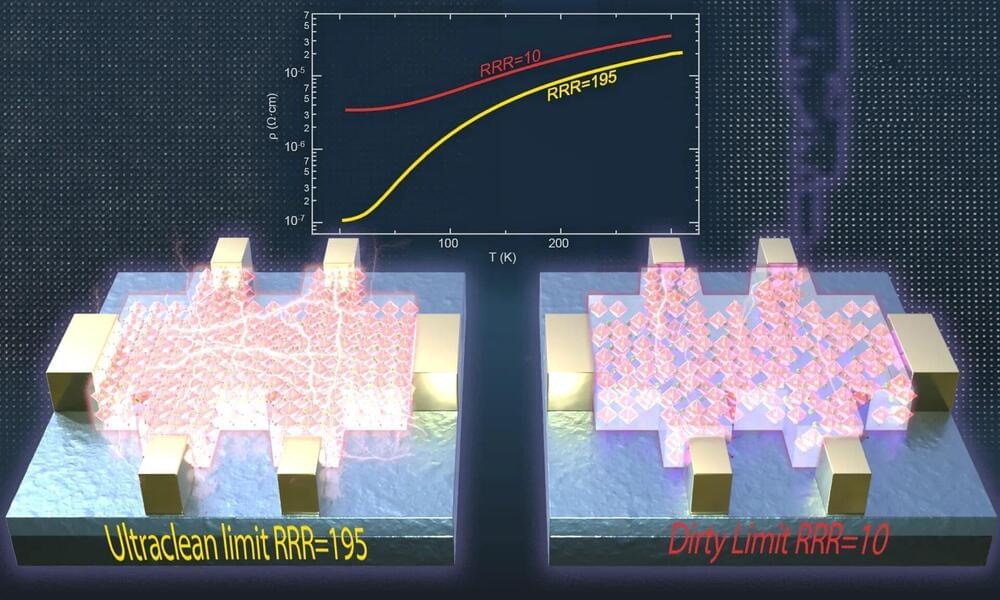In a paper published today in Nature Communications, researchers unveiled previously unobserved phenomena in an ultra-clean sample of the correlated metal SrVO3. The study offers experimental insights that challenge the prevailing theoretical models of these unusual metals.
The international research team—from the Paul Drude Institute of Solid State Electronics (PDI), Germany; Oak Ridge National Laboratory (ORNL); Pennsylvania State University; University of Pittsburgh; the Pittsburgh Quantum Institute; and University of Minnesota—believes their findings will prompt a re-evaluation of current theories on electron correlation effects, shedding light on the origins of valuable phenomena in these systems, including magnetic properties, high-temperature superconductivity, and the unique characteristics of highly unusual transparent metals.
The perovskite oxide material SrVO3 is classified as a Fermi liquid—a state describing a system of interacting electrons in a metal at sufficiently low temperatures.









Comments are closed.